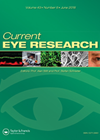Diclofenac versus Bromfenac after cataract surgery
1 April 2019
| Kurt Spiteri Cornish
|
EYE - Cataract, EYE - Refractive
|
Non-steroidal anti-inflammatory drugs, bromfenac, cataract surgery, diclofenac, intraocular inflammation
Non-steroidal anti-inflammatory drugs (NSAIDs) are commonly used after cataract surgery to reduce inflammation and cystoid macular oedema (CMO). Diclofenac 0.1% is used three to five times daily for 28 days and Bromfenac 0.09% twice daily for 14 days postoperatively. The...






